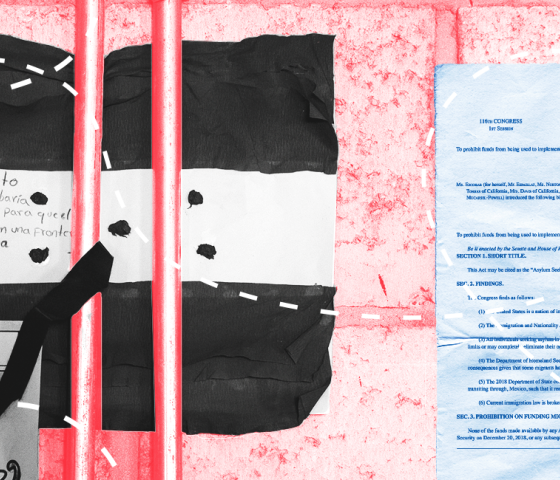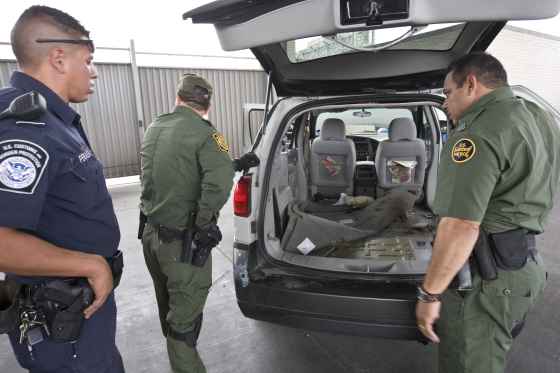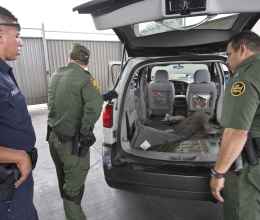March 11, 2020
David A. Marin
Field Office Director, U.S. Immigration and Customs Enforcement
300 N. Los Angeles Street
Los Angeles, CA 90012
david.a.marin@ice.dhs.gov
James Janecka
Warden, Adelanto ICE Processing Center
10250 Rancho Road
Adelanto, CA, 92301
Dear Field Officer David Marin and Warden James Janecka,
We are writing to urge you to immediately develop evidence-based and proactive plans for the prevention and management of COVID-19 at the Adelanto ICE Processing Center. We understand based on your March 10, 2020 statement that ICE is tracking the outbreak and that some detainees have met the criteria for testing.1 We would like to meet with you within the next two weeks to discuss how you are protecting the health of the people in your custody and the people who work in the detention center.
People in detention are highly vulnerable to outbreaks of contagious illnesses. They are housed in close quarters and are often in poor health. Without the active engagement of the detention center's administration, they have little ability to inform themselves about preventive measures, or to take such measures if they do manage to learn of them. We are particularly concerned about the health and safety of the people detained at Adelanto, given the facility’s demonstrated failure to provide adequate medical care in the past.2 Protecting the health of people in detention is also a necessary step to protecting the public safety of the broader community, as detention center staff and ICE officers go back to their homes each night.
We ask that you immediately reach out to the San Bernardino County Department of Public Health (DPH) to develop plans to address the virus in the detention center. Having an appropriate, evidence-based plan in place can help prevent an outbreak and minimize its impact if one does occur. Not having one may cost lives.
While the plan should be developed collaboratively by ICE, GEO and the San Bernardino County Department of Public Health (DPH), some of the critical issues that should be addressed are:
- Education of the people in your custody: People housed in the detention center need to be informed about the virus and the measures they can take to minimize their risk of contracting or spreading the virus. They should be educated on the importance of proper handwashing, coughing into their elbows, and social distancing to the extent they can. Information about the spread of the virus, the risks associated with it, and prevention and treatment measures should be based on the best available science.
- Education of the staff: Correctional, administrative, and medical staff all should be educated about the virus to protect themselves and their families, as well as the people in their custody.
- Staffing plans: Regardless of how many staff stay home because they are sick, the detention center will have to continue functioning. There should be a plan for how necessary functions and services will continue if large numbers of staff are out with the virus.
- Staffing plans for services provided by detainees: Many tasks in detention facilities, such as food preparation and basic sanitation, are performed by detainees. The plans for an outbreak should also address how necessary tasks performed by detainees will continue if large numbers of detainees are ill.
- Provision of hygiene supplies: The most basic aspect of infection control is hygiene. There should be ready access to warm water and adequate hygiene supplies, both for handwashing and for cleaning.
- Screening and testing of staff and the people in your custody: The plan should provide for all staff and people in custody to be monitored daily and tested at the onset of any symptoms of cough, fever, and/or shortness of breath.
- Housing of persons exposed to the virus: The plan should describe how and where people in the detention center will be housed if they are exposed to the virus, are at high risk of serious illness if they become infected, or become sick with it. This should not result in prolonged, widespread lock-downs. Any lock-downs or interruptions in regular activities, such as exercise or visits and phone calls with families or attorneys, should be based solely on the best science available and should be as limited as possible in scope and duration. Information about lock-downs, including how long units will be locked down and what restrictions are imposed on them, should be posted publicly for visitors’ and attorneys’ awareness. Should it become medically necessary to isolate inmates, isolation should not be seen as punitive, and anyone in isolation should be ensured ample access to comfort and entertainment. Fear of being placed in lock-downs or isolation could delay inmates notifying medical staff if they experience symptoms of infection.
- Treatment: Courses of treatment should be evidence-based, available immediately, and in compliance with scientifically-based public health protocols.
- Vulnerable populations: The plan should provide for additional precautions for those who are at high risk of serious illness if they are infected, such as pregnant women and people with chronic illnesses, compromised immune systems, or disabilities, and people whose housing placements restrict their access to medical care and limit the staff’s ability to observe them.
- Releasing detainees: ICE should mitigate the risk of an outbreak at the Adelanto Detention Facility by reducing the population through release on bond or parole. ICE should also exercise discretion to halt or reduce the number of people who are newly detained. At the very least, ICE should release from custody people who are from highly vulnerable populations, people at increased risk of the disease, and anyone suspected or showing symptoms of COVID-19 — taking care to ensure they can receive adequate medical care outside the detention center.
- Data collection: The collection of data regarding COVID-19 will be part of the public health response. As with any contagious disease, data collection is critical to understanding and fighting the virus. The detention system should be part of this process. The same information that is tracked in the community should be tracked in the detention facilities.
Please let us know via written response by Friday, March 13, 2020 when you will be available to discuss your plans with us.
Sincerely,
Eva Bitran
Staff Attorney, ACLU of Southern California
Grace Meng
Senior Researcher, US Program, Human Rights Watch
CC:
Gabriel Valdez
Assistant Field Office Director
U.S. Immigration and Customs Enforcement Adelanto Detention Center
10400 Rancho Road
Adelanto, CA 92301
Gabriel.A.Valdez@ice.dhs.gov
Trudy Raymundo
Director
San Bernardino County Department of Public Health
351 N Mountain View Ave., 3rd Floor, Room 303
San Bernardino, CA 92415
Trudy.Raymundo@dph.sbcounty.gov
1. See Brittny Mejia, “ICE says no confirmed coronavirus among detainees, but four meet criteria for testing,” LA times (Mar. 10, 2020), available at https://www.latimes.com/california/story/2020-03-10/ice-says-no-detainees- have-coronavirus-four-being-tested. ↑ Go back
See, e.g., Paloma Esquivel & Brittny Mejia, “Nooses in cells, rotting teeth — report details harsh conditions at Adelanto immigration facility,” LA Times (Oct. 2, 2018), available at https://www.latimes.com/local/lanow/la-me- ln-adelanto-oig-20181002-story.html; NGO Letter Concerning Inadequate Medical Care at Adelanto (May 15, 2015), available at https://www.aclusocal.org/sites/default/files/wp-content/uploads/2015/05/NGO-letter-re-Adelanto-medical-care.pdf ; Human Rights Watch, American Civil Liberties Union, et al., "Code Red: The Fatal Consequences of Dangerously Substandard Medical Care in Immigration Detention" (June 2018), https://www.hrw.org/report/2018/06/20/code-red/fatal-consequences-dangerously-substandard-medical-care- immigration. ↑ Go back.




